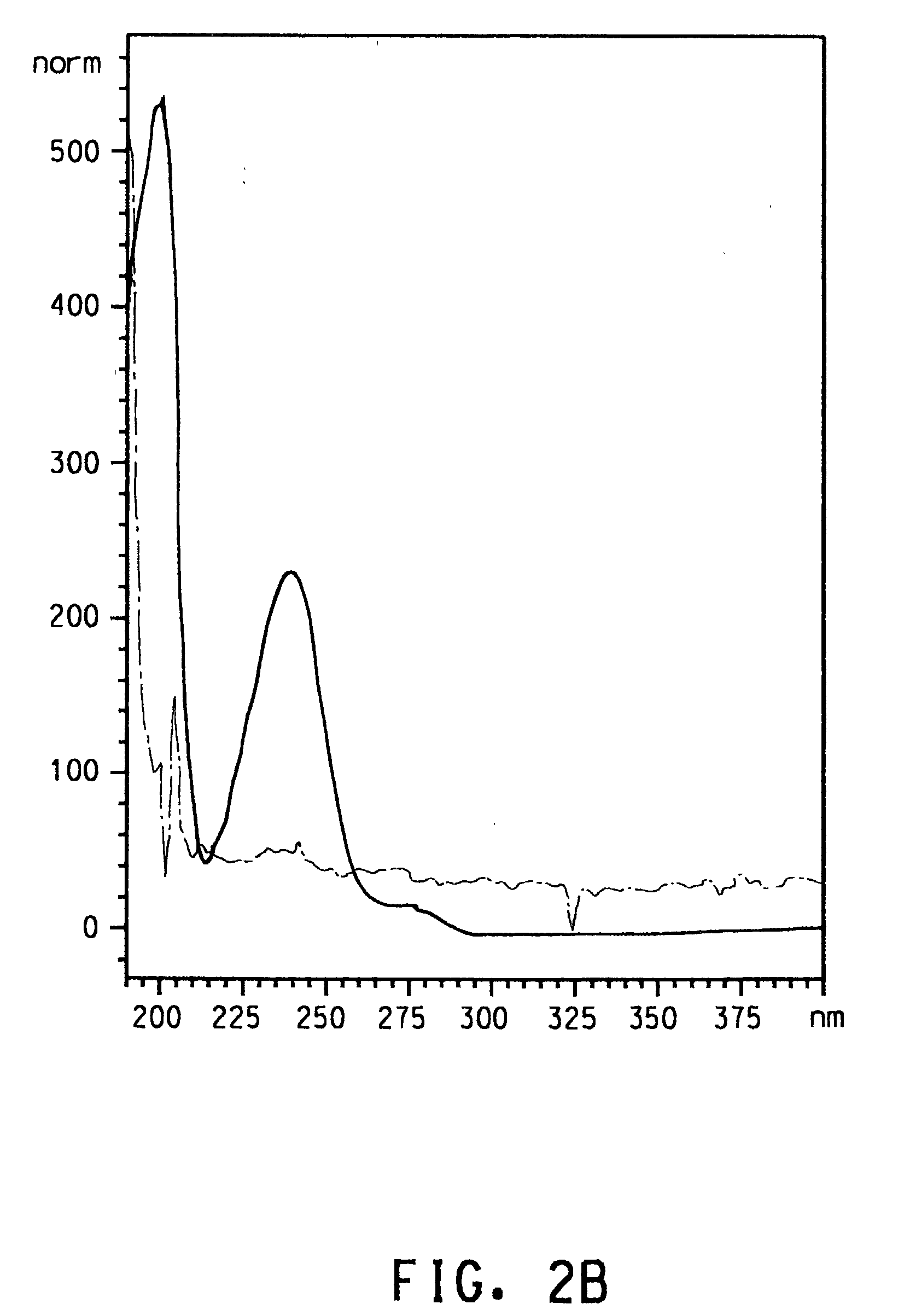Terephthalic acid producing proteobacteria
a technology of terephthalic acid and proteobacteria, which is applied in the field of terephthalic acid producing proteobacteria, can solve the problem that the producers of the present invention are unable to use m-xylene as a sole carbon sour
- Summary
- Abstract
- Description
- Claims
- Application Information
AI Technical Summary
Benefits of technology
Problems solved by technology
Method used
Image
Examples
example 1
Isolation and Identification of Bacteria that Grow with p-Xylene, p-Toluic Acid and Terephthalic Acid as Sole Sources of Carbon and Energy
[0094] Various bacteria were isolated that could grow on p-xylene as the sole source of carbon and energy. Several of these isolates also grew on p-toluic acid and terephthalic acid supplied individually as sole sources of carbon and energy. Since p-toluic acid is an expected intermediate in the metabolic oxidation of p-xylene to terephthalic acid by bacteria, a collection of isolates that grow on p-xylene, p-toluic acid and terephthalic acid is likely to include bacteria that enzymatically oxidize p-xylene to terephthalic acid. Analysis of 16s rRNA gene sequences indicated that the collection of isolates included members of the bacterial genra Pseudomonas and Burkholderia.
[0095] Bacteria that grow on p-xylene, p-toluic acid and terephthalic acid were isolated from an enrichment culture. The enrichment culture was established by inoculating 1 mL o...
example 2
Conversion of p-Xylene Into Terephthalic Acid by Bacteria of the Genus Burkholderia
[0100] Example 2 demonstrated that strain IR3 (ATCC 202150) and other Burkholderia isolates produced terephthalic acid when grown in S12 medium with p-xylene supplied as the only source of carbon and energy. Since all of the Burkholderia isolates had a high degree of homology in the 16s rRNA genes and preliminary experiments indicated that all four isolates produced terephthalic acid, isolate IR3 (ATCC 202150) was selected for further characterization. Isolate IR3 was grown to an optical density at 600 nm (OD.sub.600) of 0.968 in 60 mL of S12 medium in a 250 mL screw-cap Erlenmeyer flask with 500 .mu.L of p-xylene in a reservoir. The cells were harvested by centrifugation and resuspended in S12 medium at an OD.sub.600 of 0.654. The cells were divided into three 35 mL aliquots. Each aliquot was dispensed into a sterile 125 mL screw-cap Erlenmeyer flask. One flask was autoclaved with its contents for 15...
example 3
Analysis of Terephthalic Acid Produced by Bacteria of the Genus Burkholderia
[0102] Example 3 demonstrated that the p-toluic acid, 4-carboxybenzyl alcohol and terephthalic acid produced from p-xylene by Burkholderia IR3 (ATCC 202150) were identical to authentic standards by HPLC diode array analysis and mass spectrometry. These results support the conclusion that isolate IR3 (ATCC 202150) produces terephthalic acid from p-xylene by means of a previously unknown pathway.
[0103] HPLC Diode Array Analysis:
[0104] Isolate IR3 (ATCC 202150) was grown to an OD.sub.600 of 0.60 in 20 mL of S12 medium in a 250 mL screw-cap Erlenmeyer flask with 200 .mu.L of p-xylene in a reservoir. Samples (1.5 mL) of the culture were placed in 1.5 mL microfuge tubes and mixed with 15 .mu.L of p-xylene. The samples were incubated without shaking for 72 hours at 25.degree. C. and then filtered. The samples were analyzed by reverse-phase HPLC with a diode array UV-visible detector set at 240 nm.
[0105] The chromat...
PUM
 Login to View More
Login to View More Abstract
Description
Claims
Application Information
 Login to View More
Login to View More - R&D
- Intellectual Property
- Life Sciences
- Materials
- Tech Scout
- Unparalleled Data Quality
- Higher Quality Content
- 60% Fewer Hallucinations
Browse by: Latest US Patents, China's latest patents, Technical Efficacy Thesaurus, Application Domain, Technology Topic, Popular Technical Reports.
© 2025 PatSnap. All rights reserved.Legal|Privacy policy|Modern Slavery Act Transparency Statement|Sitemap|About US| Contact US: help@patsnap.com



